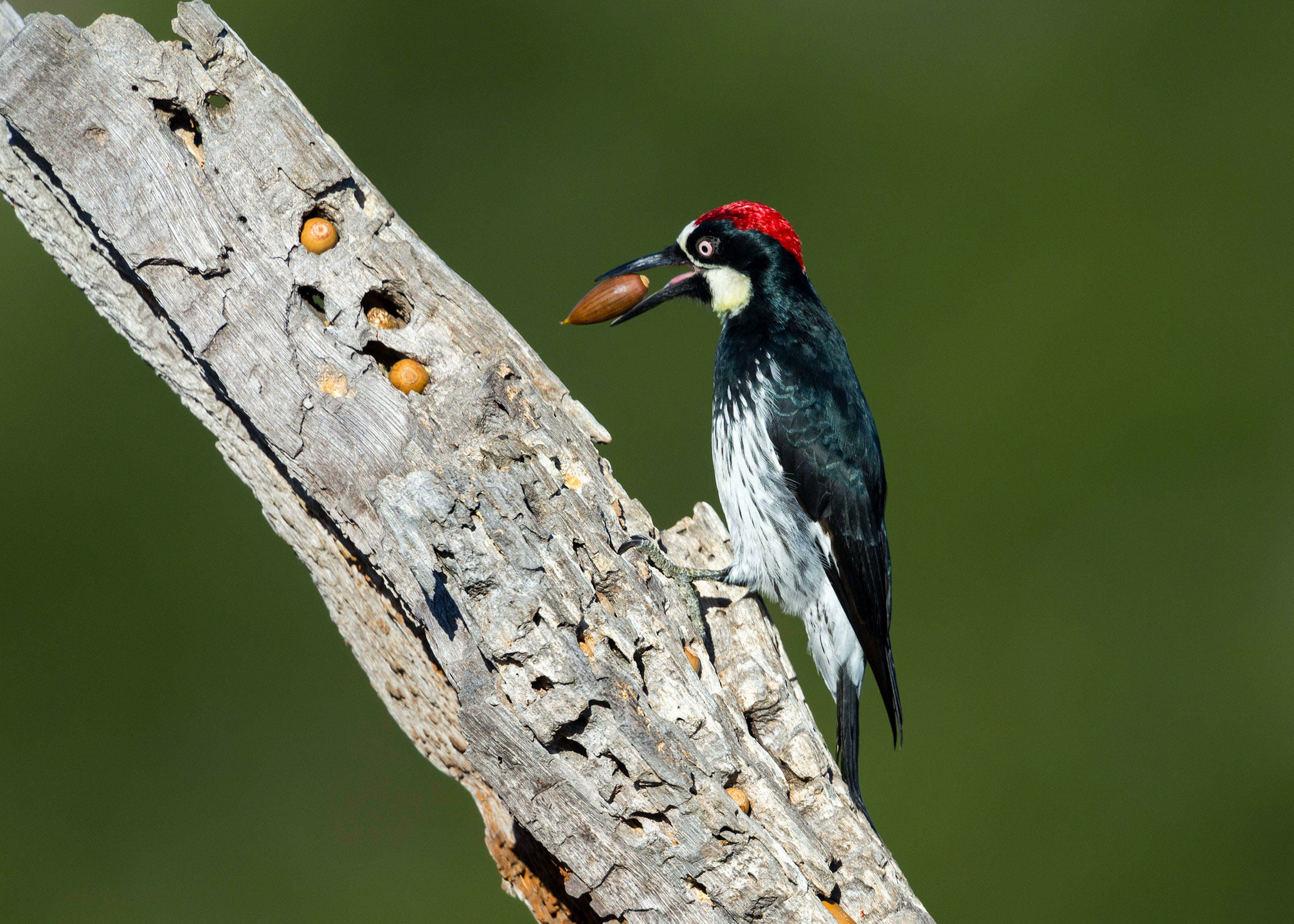

Attract them to your yard by putting out suet, sunflower seeds, peanuts, or cracked corn.įor more information about Acorn Woodpeckers, visit the web pages at and Įnjoy more beautiful photos of Acorn Woodpeckers at the Alan Murphy and Glenn Bartley websites.

Acorn Woodpeckers are commonly seen in Los Alamos and present in Bandelier, but they had not been reported in White Rock until this fall, when a few have been spotted, undoubtedly as a part of this fall and winter’s large montane irruption. They cooperatively breed in groups, sharing mating, nesting duties, rearing of young, and storing acorns. Cooperative breeding behavior could therefore be a risk-averse strategy to maximize fitness by reducing environmentally induced fecundity variance. Instead, they reside year-round in oak or pine forests from Central America as far north as Washington State.

Created enrichment items that are safe and encourage natural behaviors. Most Acorn Woodpecker populations do not migrate. desert tortoise, acorn woodpecker, mourning dove, rock dove, band-tailed. See the end of the article for the answer.Ĭomparison of a male and female Acorn Woodpecker Environmental changes occurred after 1955 (see text). Once you have done that, determine the sex of the bird above, sitting on the tree branch. The number of pairs of Starlings, Red-headed Woodpeckers, and Yellow-shafted Flickers breed- ing in Trelease Woods, Urbana, Illinois from 1925-73. Look at the picture below, and notice that the female bird has an extra band of black feathers on its crown, between the red at the top of the head and the white that is near the bill.

There’s a slight difference in the facial markings of the male and female Acorn Woodpecker. These stored seeds serve as emergency provisions in case other natural food sources become scarce. Acorn Woodpeckers are of a medium size, with conspicuous red, black, and white markings on their face that have earned them the nickname of being the “clown faced woodpecker.” They are named after their habit of collecting seeds (acorns, when the oaks in the mountains are successful) and stuffing them into holes they make in dead trees. the laws surrounding the process in California, and an overview of necessary tools, before then diving into an example on an Acorn Woodpecker specimen. They regularly visit the suet or seed feeders in the wildlife area, and can often be seen chasing away competing birds, squirrels, and chipmunks from “their” bird food. Producer: John Kessler Executive Producer: Sallie Bodie © 2016 Tune In to Nature.One of our most reliable visitors to the Los Alamos Nature Center is the Acorn Woodpecker ( Melanerpes formicivorus). BirdNote’s theme music was composed and played by Nancy Rumbel and John Kessler. #īird sounds provided by The Macaulay Library at the Cornell Lab of Ornithology, Ithaca, New York. Today’s show brought to you by the Bobolink Foundation. Meaning Acorn Woodpeckers spend much of the winter shuttling them from one hole to another, finding just the right fit. Because in the weeks after a fresh acorn is lodged in a hole, it dries and shrinks. So does the Acorn Woodpecker just kick back and munch acorns all winter? Not a chance. Poking and prying, the bird wedges its acorn into one hole after another, trying each hole for size, until it finds one with a perfect fit. Filling those drilled holes is a serious task, not to be done without careful consideration. Art by Ian Tizard Melanerpes formicivorus The Acorn Woodpecker is a conspicuous inhabitant of foothill and montane woodlands from western Oregon, California, and the arid American Southwest (including West Texas), through Mexico and the Central American highlands to Colombia. But if trees with thick bark are in short supply, utility poles, fence posts, or the sides of barns will serve the same purpose. When acorn storage activity begins in autumn, Acorn Woodpeckers suddenly turn into workaholics. Some of them hold as many as 50,000 acorns, which the woodpeckers rely on when insect prey and other foods are hard to come by. A family of Acorn Woodpeckers may use this storage tree, or granary, for generations. And it chips out these little recesses to fit the acorns it’ll harvest throughout the fall. We’re watching an Acorn Woodpecker, a bird found in parts of the western US. A closer look reveals thousands of these small pockets in the bark, most neatly set with acorns. Eyeing the tree with care, the woodpecker wedges the object into a shallow hole. Its face is almost clown-like, boldly patterned in black and cream, with a red crown. A large, dark woodpecker clings to the side of a tree. The protective effect of environmental enrichment on radiation induced. Acorn Woodpeckers Create Granaries, One Acorn at a Time Pileated Woodpecker South of the Sierra Nevada in California.


 0 kommentar(er)
0 kommentar(er)
